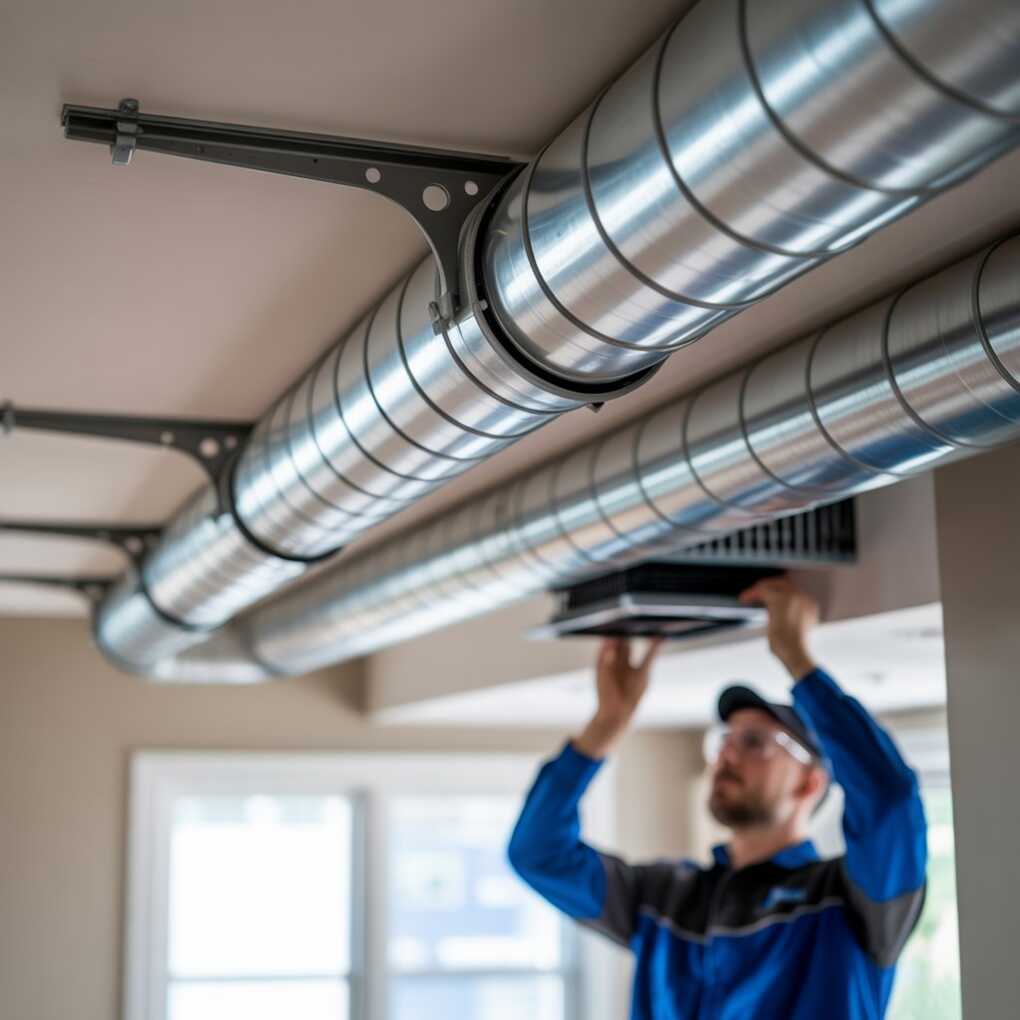When it comes to maintaining indoor comfort, many homeowners consider the furnace or air conditioning unit the centerpiece of their HVAC system. While those components are certainly vital, the ductwork often plays an equally important role in ensuring that conditioned air travels efficiently throughout the home. Over time, ducts can deteriorate, become misaligned, or lose efficiency due to leaks and blockages. Simply replacing the HVAC unit without addressing aging ductwork can reduce the performance and efficiency of the new system. We will explore how ductwork contributes to the overall function of heating and cooling systems, when it is appropriate to upgrade both the HVAC unit and ducts together, and why this combined approach can have lasting benefits for energy efficiency, comfort, and long-term reliability.
When considering an HVAC replacement, it’s crucial to evaluate the condition of your ductwork to ensure optimal system performance. Upgrading both simultaneously can enhance energy efficiency and indoor air quality. For those in the Dothan area, consulting with professionals like Long Heating and Cooling near Dothan can provide valuable insights into whether your ductwork needs an upgrade. Their expertise can help you make informed decisions, ensuring that your HVAC system operates at peak efficiency and provides the comfort you need throughout the year. Properly maintained ductwork not only supports your HVAC system but also contributes to a healthier living environment.

When to Upgrade Both HVAC and Ductwork
Signs of Poor Airflow and Uneven Temperatures
One of the most noticeable indicators that your HVAC unit and ductwork may need upgrading is inconsistent airflow across different rooms. If you find that certain areas of the home are too warm while others remain cold, the issue may not solely lie with the air conditioning or heating unit. Ducts that are old, undersized, or leaking can severely restrict airflow, making it difficult for even a brand-new HVAC system to distribute air properly. This imbalance not only causes discomfort but also increases energy bills as the system works harder to compensate. Upgrading both ensures that the HVAC unit delivers the right amount of conditioned air while the ductwork efficiently distributes it throughout the home, creating balanced temperatures and reducing wasted energy. For more details, please visit https://legendairtx.com
High Energy Bills Despite a New System
It can be frustrating to install a new, efficient HVAC unit only to find that your monthly energy costs remain higher than expected. In many cases, the culprit is outdated ductwork. Leaky ducts can lose up to 30% of conditioned air before it ever reaches your living spaces. That means the furnace or air conditioner must cycle longer and harder to reach the desired indoor temperature, negating the efficiency gains of the new system. When ducts are properly sealed, insulated, and sized to match the HVAC unit, the entire system operates more smoothly. Upgrading both components simultaneously allows homeowners to maximize their investment, ensuring the energy-efficient equipment performs at its full potential without being compromised by faulty air distribution channels.
Age and Wear of Ductwork
Just like HVAC units, ductwork has a limited lifespan. While many systems last 15 to 20 years, duct materials can break down over time, especially if they were poorly installed or exposed to moisture. Joints may loosen, insulation may degrade, and dust or debris can accumulate inside. If you are replacing a unit that has been running for two decades, chances are the ductwork is also nearing the end of its useful life. Installing a new HVAC system without addressing worn-out ducts can lead to premature wear on the equipment, as the unit strains against inefficient airflow. By upgrading both, homeowners can achieve a fresh start with a system designed to function harmoniously, reducing strain, improving indoor air quality, and extending the lifespan of the new equipment.
Noisy Operation and Leaks
Another signal that it may be time to consider ductwork upgrades alongside an HVAC replacement is when you notice unusual noises or air leaks. Rattling, whistling, or booming sounds can indicate issues such as loose duct connections or pressure imbalances. Similarly, visible gaps or damaged insulation in ducts can significantly hinder performance. If the HVAC system is being replaced but the ductwork remains in poor condition, the new unit may not resolve these issues. In fact, it may amplify them because of the stronger airflow trying to move through compromised ducts. Replacing both allows technicians to create a quiet, sealed system that enhances indoor comfort. This combination not only minimizes noise but also prevents costly energy waste and reduces wear on the HVAC unit.
Improving Indoor Air Quality
Beyond efficiency and comfort, ductwork has a significant impact on indoor air quality. Dust, allergens, mold, and pollutants can accumulate inside ducts over time, and leaks can draw in particles from attics, crawlspaces, or basements. Even the most advanced HVAC system cannot improve air quality if it is pushing air through contaminated or poorly sealed ducts. Families dealing with allergies or respiratory issues may benefit from upgrading both the HVAC unit and ductwork simultaneously. Doing so ensures that the new system not only heats and cools effectively but also delivers cleaner air throughout the home. Modern duct materials and insulation also help reduce contamination risks, supporting a healthier indoor environment.
Conclusion
Upgrading an HVAC unit without considering the condition of ductwork is like installing a powerful engine in a car with a worn-out exhaust system—it simply cannot perform at its peak. Ductwork plays a vital role in ensuring that conditioned air is delivered efficiently, evenly, and cleanly throughout the home. By investing in an integrated upgrade, homeowners maximize energy efficiency, improve comfort, and protect the longevity of their new HVAC equipment. The combined approach may involve higher upfront costs, but it pays off with consistent savings, healthier air, and a system designed to work as a complete, reliable whole. For families seeking lasting performance and comfort, addressing both HVAC replacement and ductwork upgrades simultaneously is often the most sensible decision.
